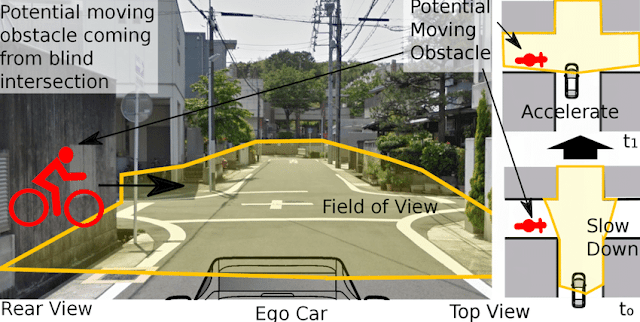When you approach a blind intersection, it means you can't see any traffic.
A blind intersection is where you approach a corner and cannot see if there is any traffic coming from the left or right.
When driving at night, approaching a blind intersection can be more difficult, as headlights from other vehicles may be shining directly in your eyes. But you still must follow the same rules as you would during the day.
As you begin to slow down before reaching a blind intersection, make sure that no one else is trying to enter it from either side. If it is safe for you to turn right or go straight ahead, do so carefully and watch out for any pedestrians that might be crossing the road.
Make sure there is no traffic.
Check for oncoming traffic and make sure there is no one coming through the intersection from the left. The last thing you want is to have a vehicle come zooming past you in the middle of your turn.
Check for pedestrians. This includes people walking, running, or skating across the street to your right or left. They might not stop if they see you perform a U-turn and could potentially get hit by your car.
Check for bicycles. Bicycles are another difficult-to-spot threat at intersections, especially if they are riding fast and/or weaving in between cars on the road. Make sure that you look out for anyone biking either across or down the street as well before making your turn.
Check for vehicles turning into the intersection from any direction (including behind you). You don't want these cars to end up blocking your path during their turns when you're trying to drive off after completing yours; it's never fun when two cars collide while trying to perform turns at an intersection!
Always slow down and be prepared to stop
If you’re driving in a state or province with a blind intersection, you should always be prepared to stop. If you do not have to stop at a blind intersection, it is recommended that you still slow down significantly, as the most common reason for failure at a blind intersection is not stopping when necessary.
Stop completely at the stop sign.
When you see a stop sign, make sure you come to a complete stop before the stop line. If there is no stop line, stop before the crosswalk or intersection.
While stopped, you must yield the right of way to anyone else in the intersection or who is within 30 meters (100 feet) of the intersection and is approaching it. Make sure you can clearly see in both directions before proceeding through the intersection.
If there is no traffic, proceed through the intersection.
If you are sure there is no traffic coming, you can proceed through the intersection. If you are not sure, do not proceed until it is clear. If there is traffic coming, you must wait. If there is a stop sign or stop line at your intersection and you have to wait for other traffic to clear before proceeding, come to a complete stop.
Do not attempt to turn into a blind intersection if there is any chance of other vehicles being present.
Before you enter the intersection, stop at the stop sign. Be sure that you cannot see any approaching traffic from either direction. In this situation, you should wait for all oncoming traffic to clear. Do not proceed until there is no more traffic coming from the right or left. Remember: a blind intersection is one where oncoming vehicles are not visible to each other until they enter the intersection.
Badintersections.com has a database of dangerous blind intersections. Please add new blind intersections to our map.

